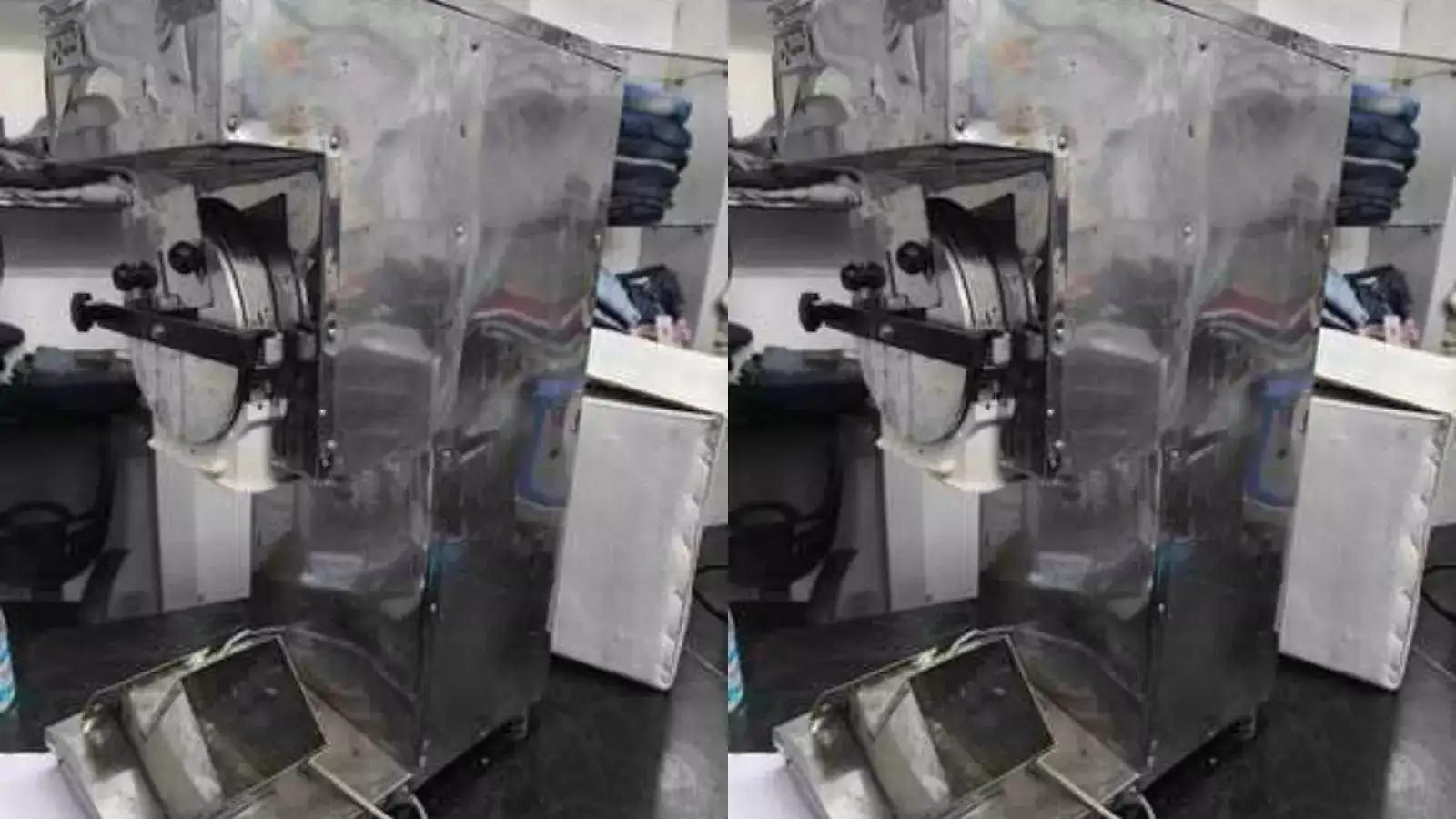Bomb-Making Machine Found: Inside Faridabad Home Where Terror Doctor Muzammil Built His Deadly Setup
What looked like just another rented house in Faridabad turned out to be the hub of a sophisticated terror operation, where a grain grinder doubled as a machine for chemical weapon preparation.
Investigators say that one of the prime accused in the November 10 Delhi car blast , Dr. Muzammil, had converted a simple household flour mill into a chemical grinder. Instead of wheat or rice, it was allegedly used to crush explosive compounds into fine powder a crucial step in manufacturing deadly materials. Images recovered from a taxi driver’s house, where the mill was kept, showed the machine modified with wires, electrical tools, and other fittings designed for chemical processing.

Just a day before the blast that killed 15 people, a video resurfaced showing around 2 ,600 kg of ammonium nitrate stored in a cleric’s isolated house. Muzammil had rented a room in the same premises for just ₹1,500 a month. Investigators believe this massive stockpile formed the backbone of the terror module’s explosive preparations. Combined with the chemicals later recovered from Faridabad, officials estimate the total seized ammonium nitrate and related materials at nearly 3,000 kg.
The probe then led authorities to Al-Falah University, where Muzammil and co-accused Umar Un Nabi were studying medicine. Searches in their respective rooms Room 13 for Muzammil and Room 4 for Umar uncovered diaries, notebooks, and documents filled with coded entries. Officials say these writings contained names, dates, numbers, and repeated mentions of the word “operation,” indicating carefully structured planning.
Many notes were dated between November 8 and 12, suggesting that the accused were preparing not just one, but possibly multiple attacks. The two men had joined the university in close succession during the pandemic Umar in 2021, with Muzammil enrolling just six months later. Investigators believe the years that followed were spent meticulously preparing for coordinated strikes.

Perhaps the most disturbing discovery was a list containing the names of over 2,500 individuals. Most were reportedly from Jammu & Kashmir the home state of both accused and from Faridabad and surrounding regions. While their involvement remains under scrutiny, the list has helped investigators map the potential scope of the network, which authorities are now calling a “white coat” terror cell, operating under the cover of academic life.
A simple flour mill and an unremarkable rented room had become the core of a large-scale terror blueprint hidden in plain sight, and dangerously intertwined with ordinary civilian surroundings. As the investigation widens, authorities continue to decode the diaries, documents, and digital data, piecing together how an everyday household machine became capable of grinding more than just grain it ground a terror operation into motion.

Investigators say that one of the prime accused in the November 10 Delhi car blast , Dr. Muzammil, had converted a simple household flour mill into a chemical grinder. Instead of wheat or rice, it was allegedly used to crush explosive compounds into fine powder a crucial step in manufacturing deadly materials. Images recovered from a taxi driver’s house, where the mill was kept, showed the machine modified with wires, electrical tools, and other fittings designed for chemical processing.

Just a day before the blast that killed 15 people, a video resurfaced showing around 2 ,600 kg of ammonium nitrate stored in a cleric’s isolated house. Muzammil had rented a room in the same premises for just ₹1,500 a month. Investigators believe this massive stockpile formed the backbone of the terror module’s explosive preparations. Combined with the chemicals later recovered from Faridabad, officials estimate the total seized ammonium nitrate and related materials at nearly 3,000 kg.
2,600 kg of Ammonium Nitrate Stored in a Cleric’s Isolated House
You may also like
- 7 Must-Do Things in Ahmedabad This Weekend for Art, Music & Fun
- 2nd Test: South Africa will look to be ruthless and take on opportunities, says Bavuma
- India looking at collaborating with Israeli startups to boost innovation: Piyush Goyal
 39 more test positive for dengue in Manipur, case tally rises to 5,166 this year
39 more test positive for dengue in Manipur, case tally rises to 5,166 this year- Sanjauli mosque row: Protest and hunger strike until death called off after 'demands met'
The probe then led authorities to Al-Falah University, where Muzammil and co-accused Umar Un Nabi were studying medicine. Searches in their respective rooms Room 13 for Muzammil and Room 4 for Umar uncovered diaries, notebooks, and documents filled with coded entries. Officials say these writings contained names, dates, numbers, and repeated mentions of the word “operation,” indicating carefully structured planning.
Many notes were dated between November 8 and 12, suggesting that the accused were preparing not just one, but possibly multiple attacks. The two men had joined the university in close succession during the pandemic Umar in 2021, with Muzammil enrolling just six months later. Investigators believe the years that followed were spent meticulously preparing for coordinated strikes.

Perhaps the most disturbing discovery was a list containing the names of over 2,500 individuals. Most were reportedly from Jammu & Kashmir the home state of both accused and from Faridabad and surrounding regions. While their involvement remains under scrutiny, the list has helped investigators map the potential scope of the network, which authorities are now calling a “white coat” terror cell, operating under the cover of academic life.
A simple flour mill and an unremarkable rented room had become the core of a large-scale terror blueprint hidden in plain sight, and dangerously intertwined with ordinary civilian surroundings. As the investigation widens, authorities continue to decode the diaries, documents, and digital data, piecing together how an everyday household machine became capable of grinding more than just grain it ground a terror operation into motion.









